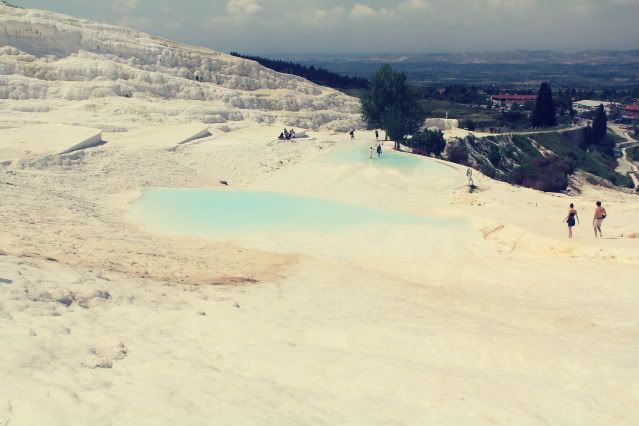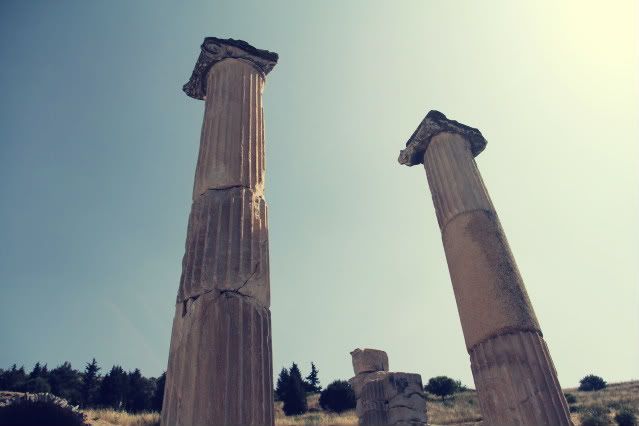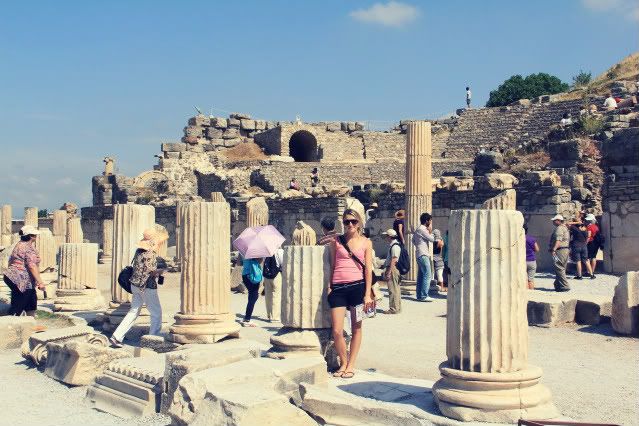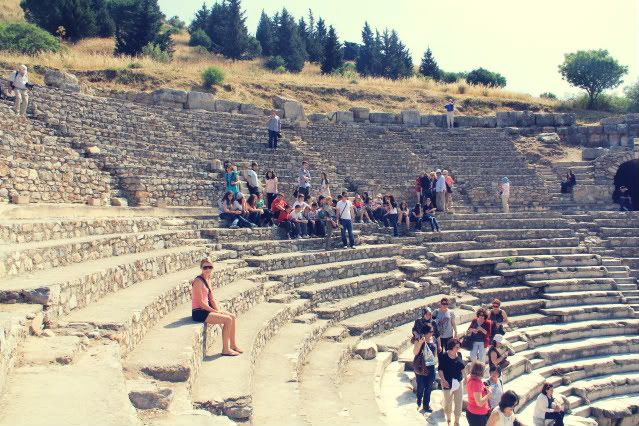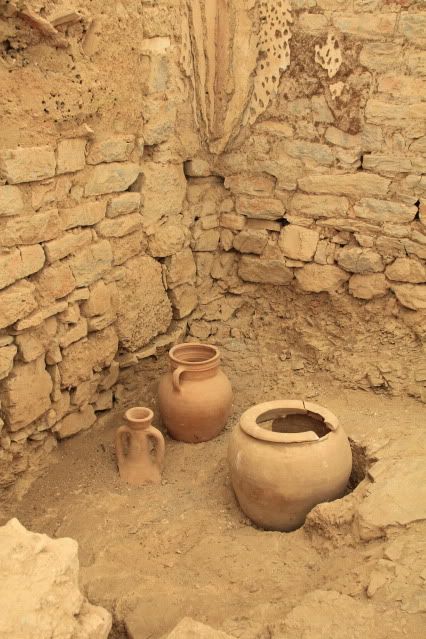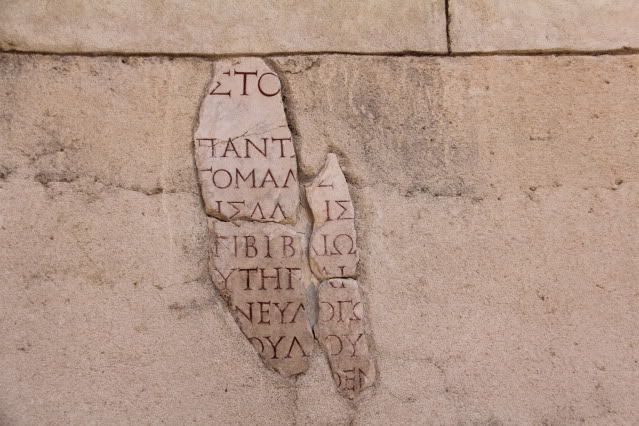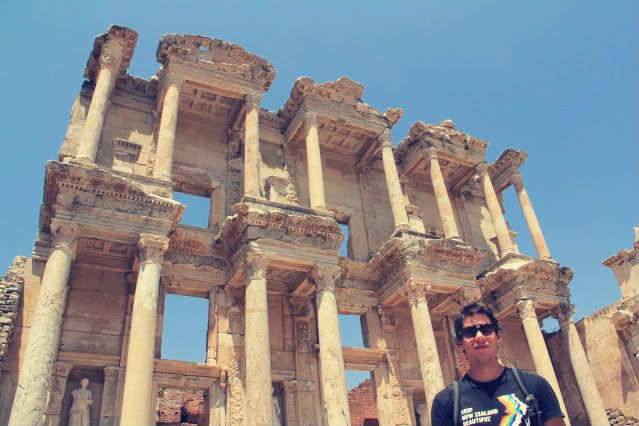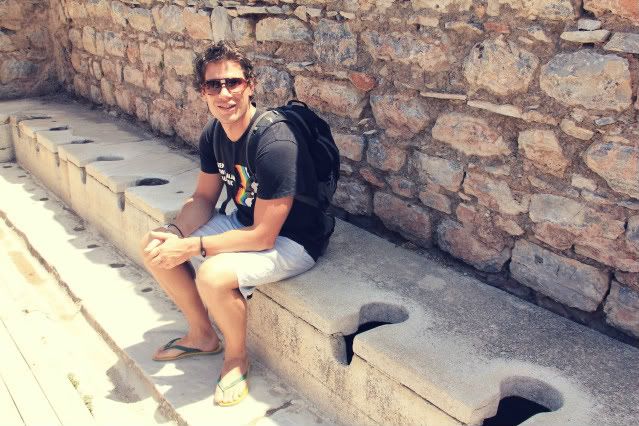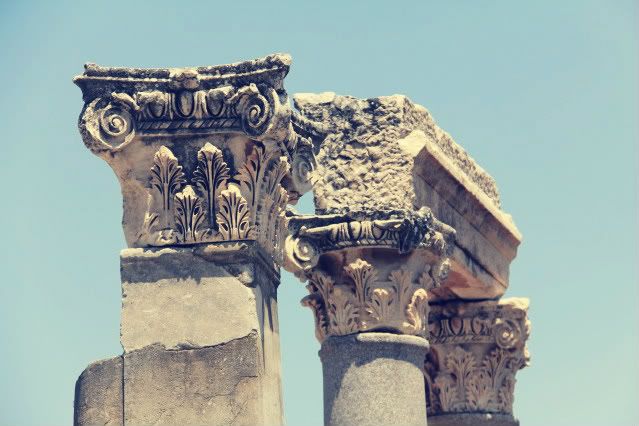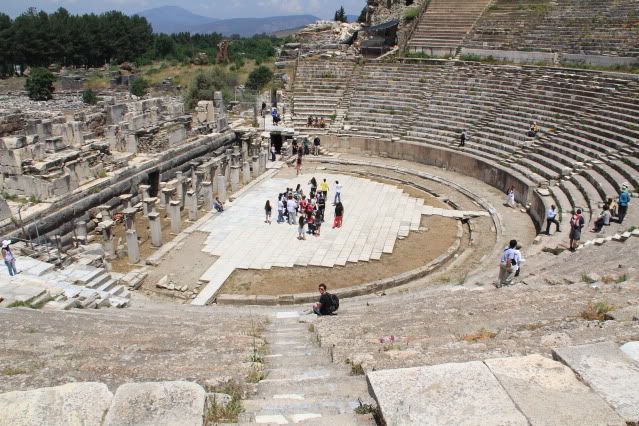The town of Pamukkale (which means "cotton castle" in Turkish) is home to the spectacular travertines as well as the ancient city of Hierapolis, and is the most famous attraction in the natural spa region of Turkey.
The town itself is nothing special, and we wondered if we'd made a mistake coming here when we arrived on a dull and rainy evening. However, we awoke the next day to glorious sunshine and found the travertines just a few minutes walk away.
The landscape is stunning, with sparkling white travertine terraces and pools full of clear blue water hugging the ridge above the town. The travertines are made of calcium carbonate and are formed when the warm mineral water reaches the surface and deposits calcium. Despite our guidebook telling us we couldn't swim in the travertine pools we saw heaps of visitors bathing in the waters so we quickly joined in!
We also visited the sprawling ruins of Hierapolis which are situated on the hill right above the travertines. This ancient city was once a popular health & spa centre during the Roman period due to the supposed healing qualities of it's calcium-rich water. The centre of the city was probably originally the Sacred Pool, which you can still swim in today amid submerged sections of original marble.
The town itself is nothing special, and we wondered if we'd made a mistake coming here when we arrived on a dull and rainy evening. However, we awoke the next day to glorious sunshine and found the travertines just a few minutes walk away.
The landscape is stunning, with sparkling white travertine terraces and pools full of clear blue water hugging the ridge above the town. The travertines are made of calcium carbonate and are formed when the warm mineral water reaches the surface and deposits calcium. Despite our guidebook telling us we couldn't swim in the travertine pools we saw heaps of visitors bathing in the waters so we quickly joined in!
We also visited the sprawling ruins of Hierapolis which are situated on the hill right above the travertines. This ancient city was once a popular health & spa centre during the Roman period due to the supposed healing qualities of it's calcium-rich water. The centre of the city was probably originally the Sacred Pool, which you can still swim in today amid submerged sections of original marble.
- Posted using BlogPress from my iPad


